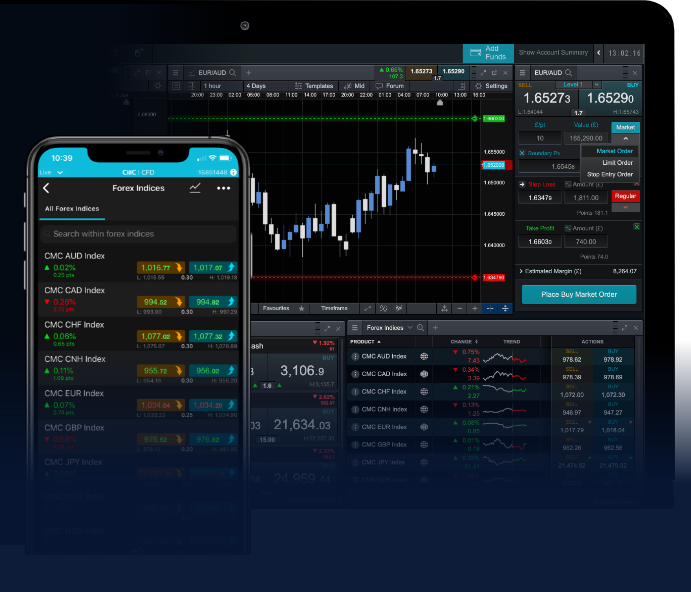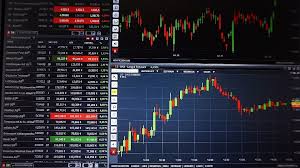
Forex trading, also known as foreign exchange trading, is one of the most exciting and rapidly growing markets in the world. With a daily trading volume exceeding $6 trillion, Forex offers lucrative opportunities for traders who are willing to learn and adapt. Whether you’re a beginner looking to enter the market or an experienced trader seeking to refine your skills, understanding the fundamentals of Forex trading is crucial. For more insights and tools tailored to traders, visit forex trading acev.io.
What is Forex Trading?
Forex trading involves the buying and selling of currency pairs in order to profit from changes in exchange rates. Unlike stock markets, the Forex market is decentralized and operates 24 hours a day, five days a week. Traders engage in this market to speculate on the price movements of currencies, taking advantage of fluctuations for profit. The major currency pairs, such as EUR/USD, USD/JPY, and GBP/USD, are among the most traded in the market.
How Does Forex Trading Work?
In Forex trading, currencies are traded in pairs. The first currency listed in the pair is known as the base currency, while the second currency is the quote currency. The price of a currency pair represents how much of the quote currency is needed to purchase one unit of the base currency. For instance, if the EUR/USD pair is quoted at 1.20, it means 1 Euro is equivalent to 1.20 US Dollars.
Forex trading is carried out through a broker or a trading platform, where traders can access real-time pricing and execute trades. The market operates through a network of banks, financial institutions, and individual traders who can buy or sell currencies at any time.
Understanding Pips and Leverage
A “pip” is a term used in Forex trading that stands for “percentage in point.” It is the smallest price movement that a given exchange rate can make. For most pairs, a pip is a one-digit movement in the fourth decimal place, while for pairs involving the Japanese Yen, it’s the second decimal place. Understanding pips is essential for calculating profits and losses.
Leverage is another critical concept in Forex trading. It allows traders to control larger positions with a smaller amount of capital. For example, with a leverage of 1:100, a trader can control a $100,000 position with just $1,000 of their own money. However, while leverage can amplify profits, it also increases the risk of significant losses, making risk management paramount in successful trading.

Types of Forex Orders
Forex traders can use various types of orders to manage their trades effectively:
- Market Order: This is an order to buy or sell a currency pair at the current market price.
- Limit Order: This allows traders to set a price at which they would like to enter or exit the market. If the market reaches that price, the order is executed.
- Stop Loss Order: A stop-loss order is designed to limit a trader’s loss by closing a position when the market moves against them.
- Take Profit Order: This order allows traders to lock in profits by closing a position when the price reaches a predetermined level.
Fundamental vs. Technical Analysis
Two main approaches traders use to analyze the Forex market are fundamental analysis and technical analysis.
Fundamental Analysis
Fundamental analysis involves evaluating economic indicators, news events, and geopolitical factors that can impact currency values. Key reports include employment figures, inflation rates, GDP growth, and central bank decisions. Traders who adopt this approach aim to forecast currency movements based on macroeconomic conditions.
Technical Analysis

On the other hand, technical analysis focuses on chart patterns, price movements, and various indicators to predict future currency movements. Traders study historical data to identify trends and potential entry and exit points. Common tools used in technical analysis include moving averages, RSI (Relative Strength Index), and Fibonacci retracements.
Developing a Trading Strategy
Creating a well-defined trading strategy is crucial for success in Forex trading. A good strategy should incorporate risk management, entry and exit points, and specific criteria for taking trades. Here are some steps to consider when developing a strategy:
- Define your trading goals and risk tolerance.
- Select the currency pairs you want to trade.
- Decide on the time frame you will trade on (e.g., short-term, medium-term, or long-term).
- Incorporate both fundamental and technical analysis for decision-making.
- Evaluate and refine your strategy regularly based on performance.
The Importance of Risk Management
Risk management is an integral part of Forex trading. It helps protect your capital and ensures long-term success. Here are some essential risk management techniques:
- Use proper position sizing: Determine the amount of capital you are willing to risk on each trade and size your positions accordingly.
- Implement stop-loss orders: Always set stop-loss orders to limit potential losses.
- Diversify your portfolio: Avoid putting all your capital into a single trade or currency pair.
- Stay informed: Keep up with market news and economic events that could impact your trades.
Conclusion
Forex trading is a dynamic and potentially lucrative market that offers traders endless opportunities to profit from currency fluctuations. By understanding the basics, developing a solid trading strategy, and implementing effective risk management techniques, new traders can position themselves for success. As you venture into Forex trading, continuous learning and adaptation are key to navigating this exciting financial landscape. Remember, the journey of a thousand pips begins with a single trade!
